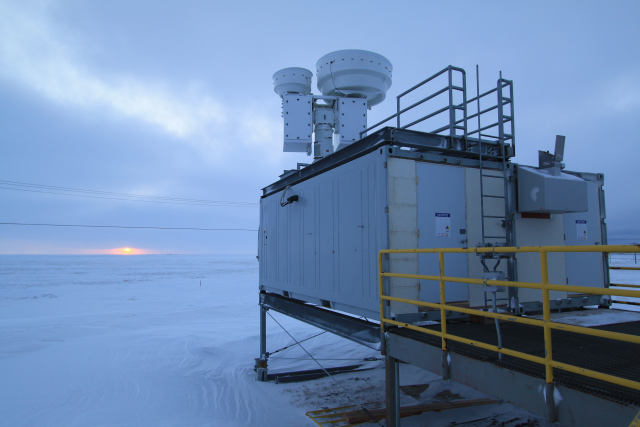Greenhouse effect observed directly over 10-year span – ‘We’re actually measuring the fact that rising carbon dioxide concentrations are leading to the greenhouse effect’
By Becky Oskin
25 February 2015 (LiveScience) – The climate-changing greenhouse effect exists and has been directly measured in the United States, a new study reports. The results confirm what scientists had already proved through models and laboratory experiments: Pumping carbon dioxide gas into the atmosphere is warming the Earth’s surface. “We’re actually measuring the fact that rising carbon dioxide concentrations are leading to the greenhouse effect,” said lead study author Dan Feldman, a scientist at the Lawrence Berkeley National Laboratory in California. “This is clear observational evidence that when we add carbon dioxide to the atmosphere, it will push the system to a warmer place.” Since the late 1950s, scientists have documented rising levels of carbon dioxide and other “greenhouse gases” in Earth’s atmosphere. Laboratory tests and physics experiments indicated that these gases absorb some of the infrared radiation that Earth emits into space, thereby raising the planet’s temperature. This is called the greenhouse effect because it is similar to how a glass greenhouse traps heat, warming the air inside. Put simply, more energy is flowing into the greenhouse than is getting out, a concept that scientists call radiative forcing. [Infographic: Earth’s Atmosphere Top to Bottom] The research team measured radiative forcing on the Earth’s surface due to carbon dioxide at two long-running atmospheric research sites owned by the Department of Energy. One is in Oklahoma and the other is near Barrow, Alaska, above the Arctic Circle. Powerful spectrometers calibrated by the United States Office of Weights and Measures tracked the infrared radiation coming down to the surface, Feldman said. Greenhouse gases in the atmosphere absorb the Earth’s infrared energy and then scatter it in all directions, some back downward toward the surface. The instruments can detect the “fingerprint” of carbon dioxide’s infrared signal because the molecule emits and absorbs infrared energy at distinctive wavelengths. Between 2000 and 2010, atmospheric concentrations of carbon dioxide rose at both research sites by 22 parts per million. (The parts per million number refers to the volume of carbon dioxide molecules in every million air molecules.) At the same time, the amount of downward-directed infrared energy from carbon dioxide increased. This meant the surface radiative forcing, or energy imbalance, also increased at both sites, the researchers report today (25 February 2015) in the journal Nature. In translation: More gas in the atmosphere meant more infrared energy was reflected back at the Earth instead of escaping into space. [more]
Greenhouse Effect Is Witnessed…and Getting Worse
ABSTRACT: The climatic impact of CO2 and other greenhouse gases is usually quantified in terms of radiative forcing1, calculated as the difference between estimates of the Earth’s radiation field from pre-industrial and present-day concentrations of these gases. Radiative transfer models calculate that the increase in CO2 since 1750 corresponds to a global annual-mean radiative forcing at the tropopause of 1.82 ± 0.19 W m−2 (ref. 2). However, despite widespread scientific discussion and modelling of the climate impacts of well-mixed greenhouse gases, there is little direct observational evidence of the radiative impact of increasing atmospheric CO2. Here we present observationally based evidence of clear-sky CO2 surface radiative forcing that is directly attributable to the increase, between 2000 and 2010, of 22 parts per million atmospheric CO2. The time series of this forcing at the two locations—the Southern Great Plains and the North Slope of Alaska—are derived from Atmospheric Emitted Radiance Interferometer spectra3 together with ancillary measurements and thoroughly corroborated radiative transfer calculations4. The time series both show statistically significant trends of 0.2 W m−2 per decade (with respective uncertainties of ±0.06 W m−2 per decade and ±0.07 W m−2 per decade) and have seasonal ranges of 0.1–0.2 W m−2. This is approximately ten per cent of the trend in downwelling longwave radiation5, 6, 7. These results confirm theoretical predictions of the atmospheric greenhouse effect due to anthropogenic emissions, and provide empirical evidence of how rising CO2 levels, mediated by temporal variations due to photosynthesis and respiration, are affecting the surface energy balance.
Observational determination of surface radiative forcing by CO2 from 2000 to 2010
